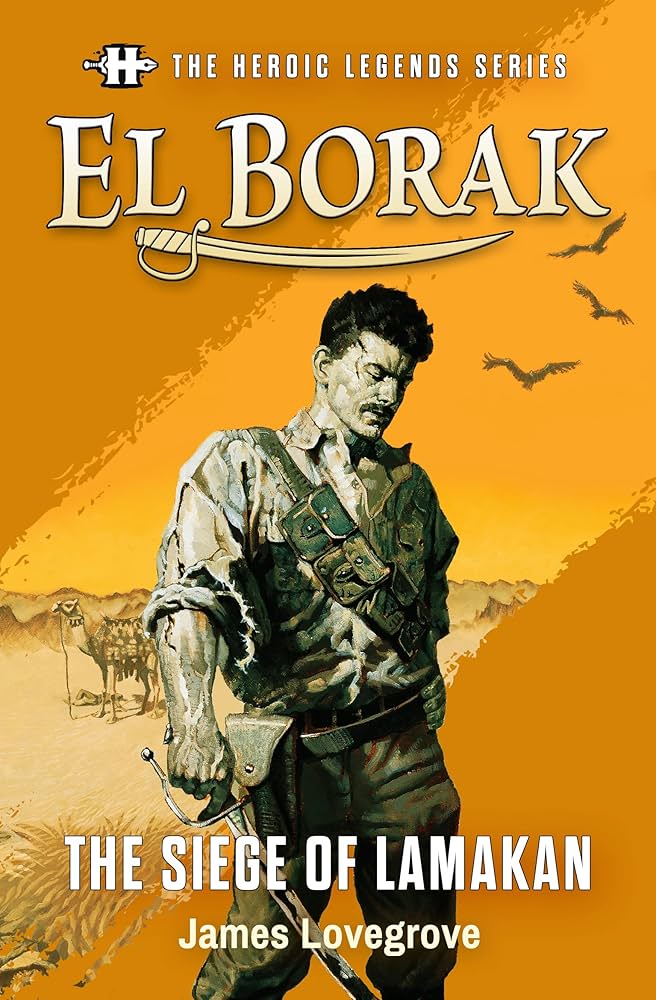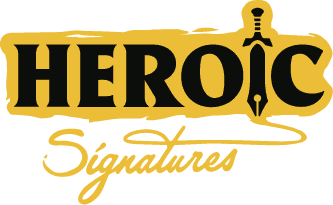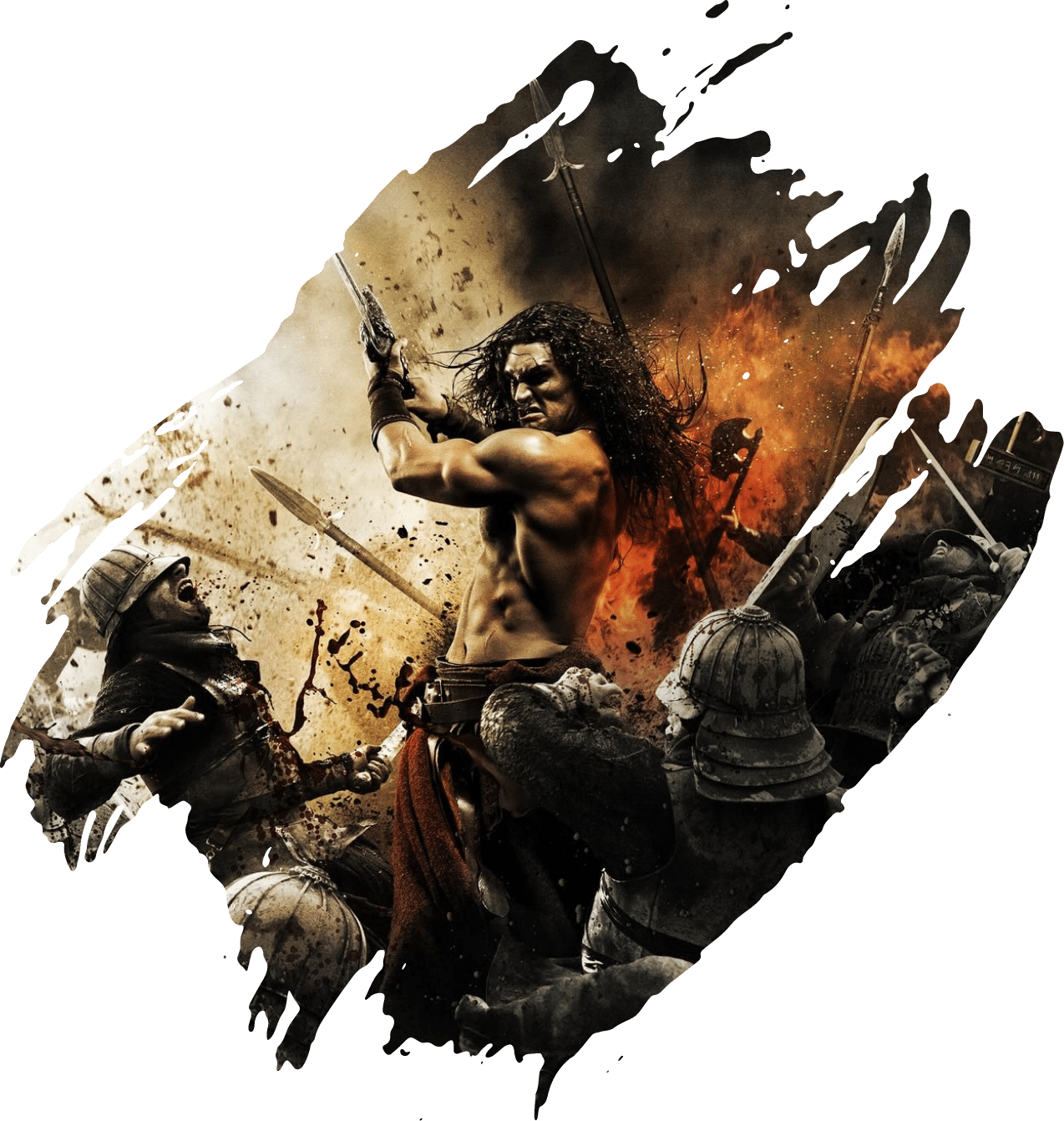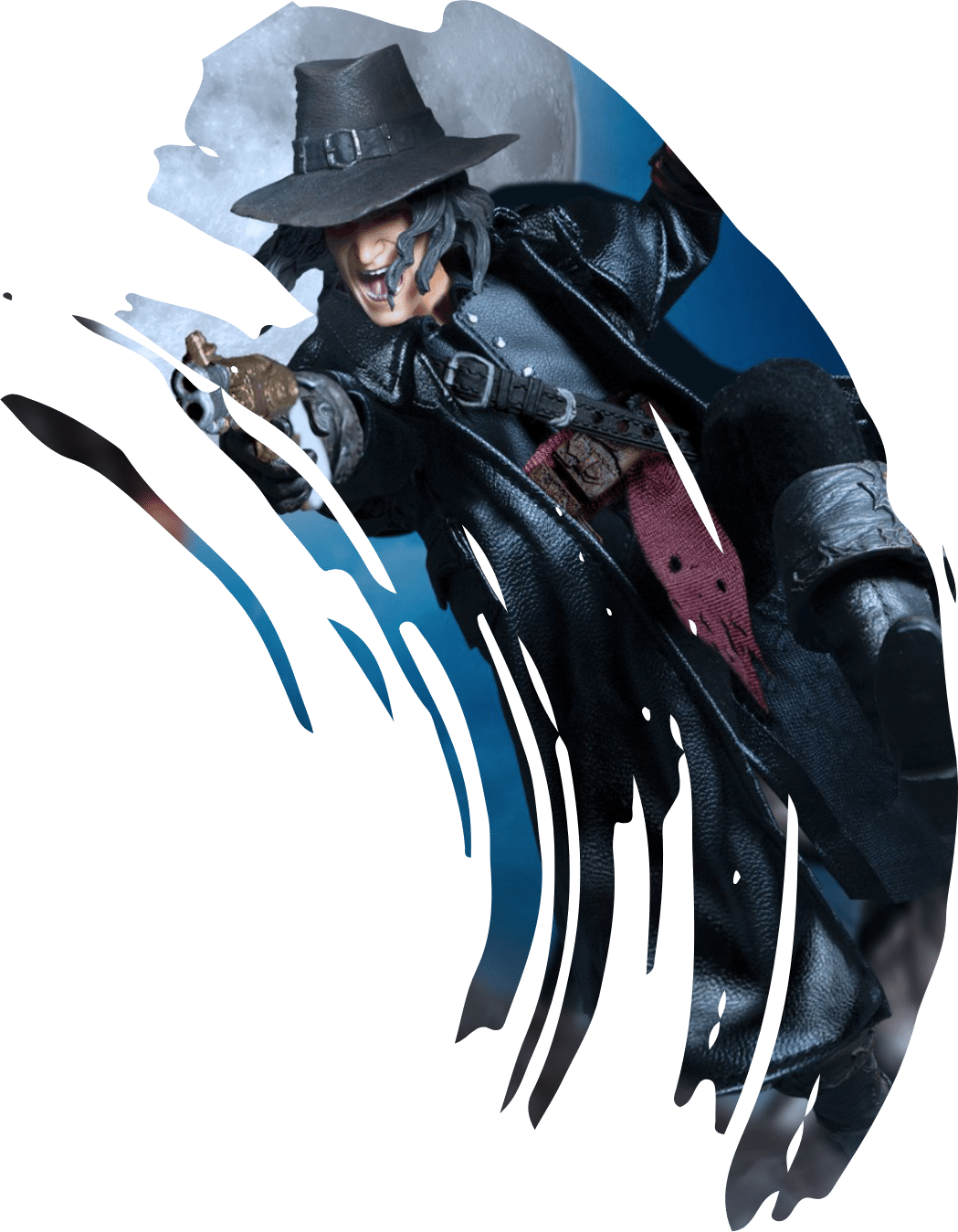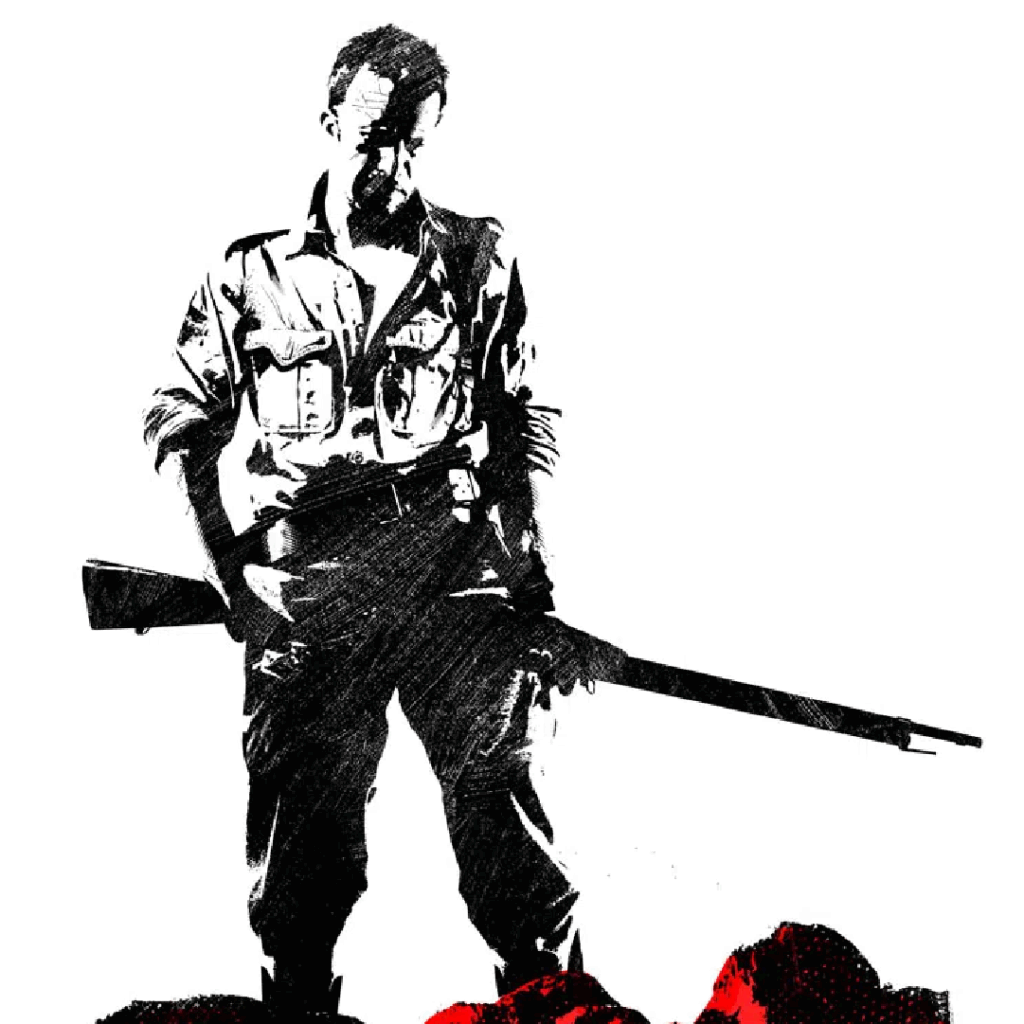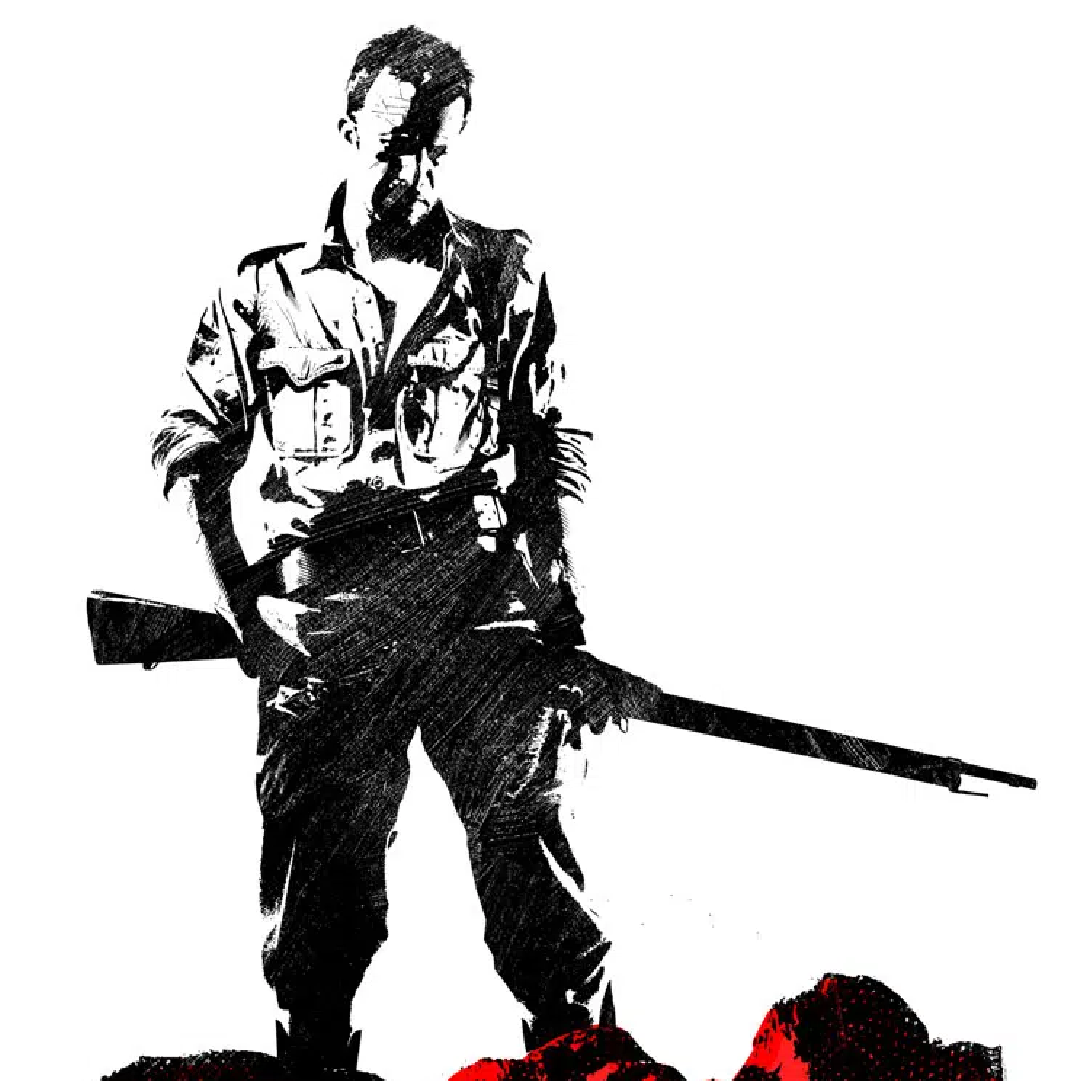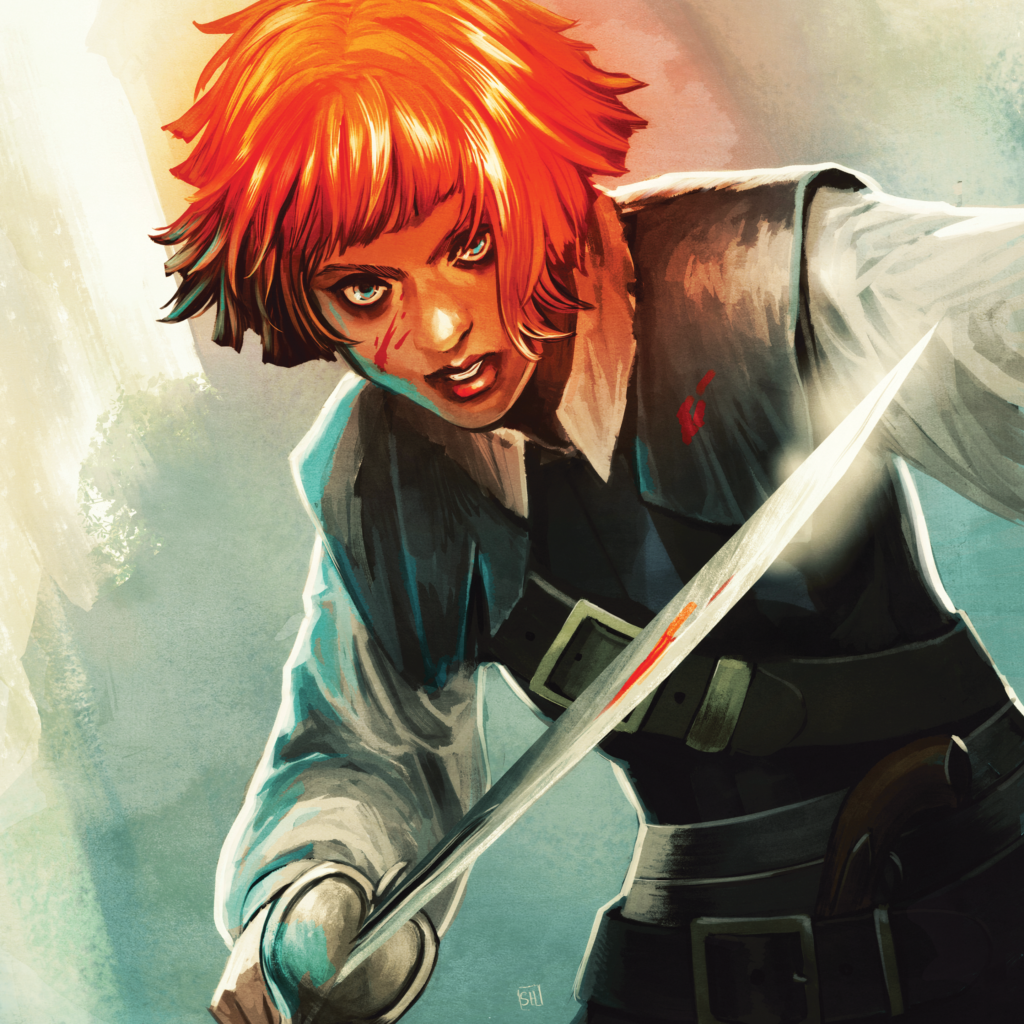We all know the hat, the whip, the legend that is Indiana Jones.
But what if the shadow he casts stretches further back, into an older, wilder world of pulp heroics, conceived by the same mind that brought us Conan the Barbarian?
What if the very blueprint for that iconic, adventure-ready silhouette – that blend of rugged intellect and two-fisted action – was first etched not in a university hall, but in the blood-soaked sands of a forgotten Afghanistan?
What if Indiana Jones got his look from El Borak?
This is the story of how Steranko’s primal depictions of Howard’s gunslinging adventurer became the undeniable crucible in which the iconic look of Dr. Jones was forged.
Key Players in Pre-Indiana Jones Art
Before we dive into this fascinating intersection of pulp adventure and cinematic history, let’s set the stage.
First, meet Francis Xavier Gordon, better known to friend and foe alike as El Borak, meaning “The Swift”. Born from the prodigious imagination of Robert E. Howard, El Borak is a force of nature. Picture a sharp-eyed Texas gunslinger transformed by a lifetime of adventure, equally at home with six-guns or scimitars, thundering through mountain passes in early 20th-century Afghanistan. He’s a man honed by the unforgiving frontier, skilled in navigating the treacherous currents of tribal politics and known for his lightning-fast draw.
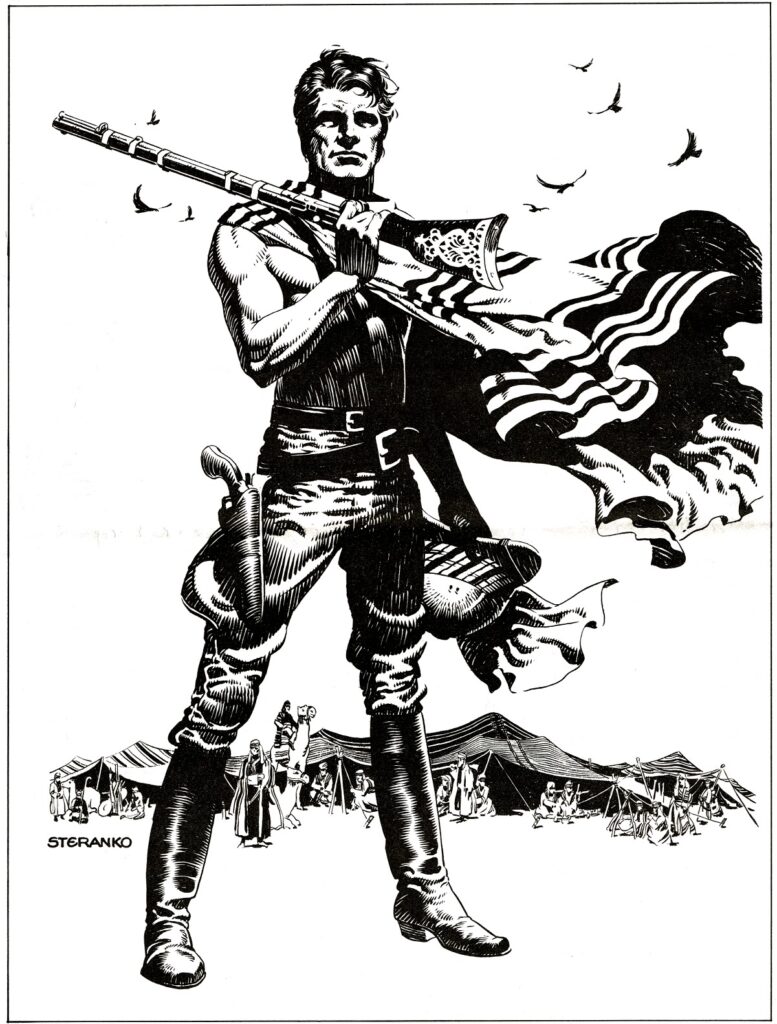
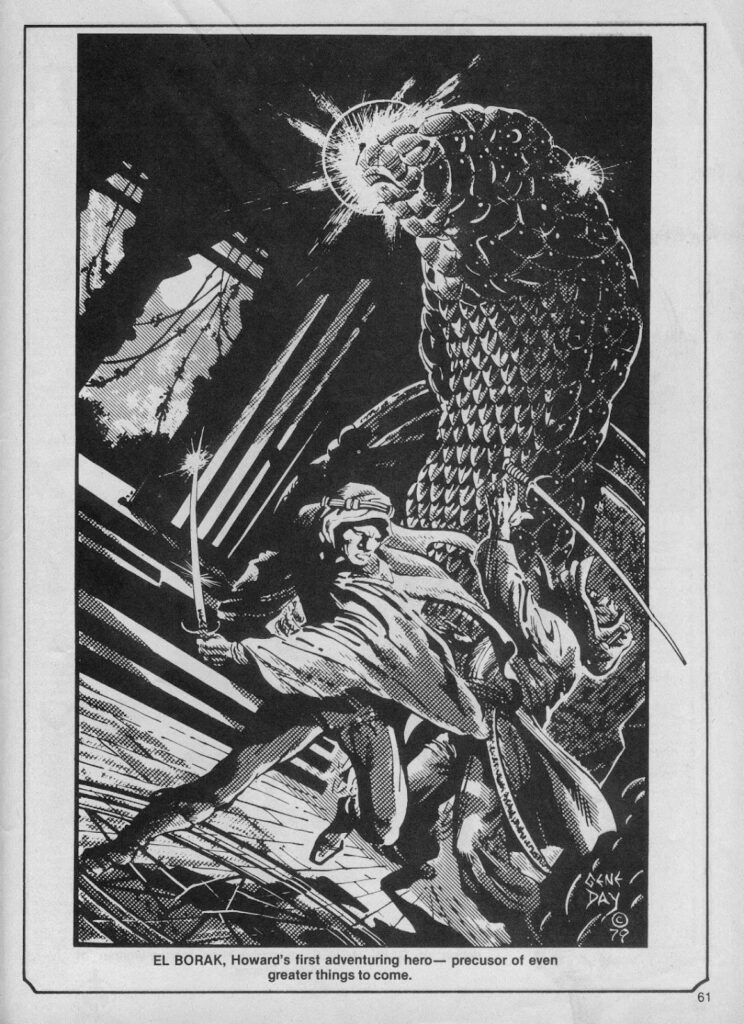
Next, we have Jim Steranko, a truly visionary artist in the world of comics and illustration. Celebrated for his groundbreaking, dynamic style, Steranko’s work often crackled with an innovative energy that pushed the boundaries of visual storytelling.
The paths of this rugged adventurer and the revolutionary artist would intersect in the 1970s. It was then that Steranko created a series of striking illustrations of El Borak for a Robert E. Howard fanzine called Lone Star Fictioneer. This depiction of Howard’s adventurer, caught more than a few eyes, including one that would soon be looking to define a new cinematic hero.
Raiders of the Lost Art Direction
As the 1970s gave way to the 1980s, a new cinematic adventure was taking shape in the mind of George Lucas. In the crucial pre-production phase for a film that would become Raiders of the Lost Ark, Lucas faced the challenge of defining the visual identity of his whip-cracking archaeologist hero, Indiana Jones. He had early concepts he wanted to capture – a larger-than-life hero for an all-out action flick set in exotic locales, reminiscent of classic serials.
But he needed an artist to help fully develop it into the real thing.
Enter Jim Steranko once more.
Recommended by an employee at Lucasfilm, Steranko was now tasked by Lucas to help design the look of this new character. He was asked to produce four key concept paintings for the film. To guide him, Lucas provided reference images from old movies, notably Humphrey Bogart in The Treasure of Sierra Madre, and stills from a later Republic Pictures serial, Zorro Rides Again, which had itself been an early inspiration for Lucas’s hero. This heavy reliance on the pulp magazines and movie serials from the 1930s was right in Robert E. Howard’s wheelhouse, creating a shared creative landscape between the two creators.
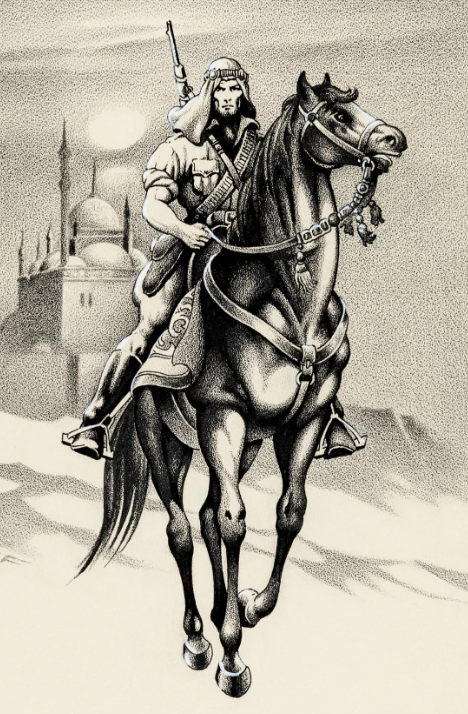

While these influences were part of the mix, Lucas was also significantly aware of Steranko’s prior work. This brings us to the crucial juncture, the moment where the DNA of El Borak appears to have been directly woven into the developing fabric of Indiana Jones.
From El Borak to Indiana Jones
The El Borak blueprint was laid bare when George Lucas reportedly took a very direct approach. He wrote his early notes for Jim Steranko on two pieces of Steranko’s own artwork.
And what were these specific artworks?
They were Steranko’s images of Robert E. Howard’s mercenary, El Borak, which had appeared in that 1976 issue of the Lone Star Fictioneer fanzine. Lucas’s instructions were clear: he told Steranko to modify the existing El Borak figure. The notes detailed changes such as giving the hero a 1940s felt hat, adding some straight pants, a leather jacket, and significantly, swapping El Borak’s rifle for a bullwhip, among other suggestions to define the correct image for his new adventurer.
This direct use of El Borak imagery as a modifiable template is the smoking gun.

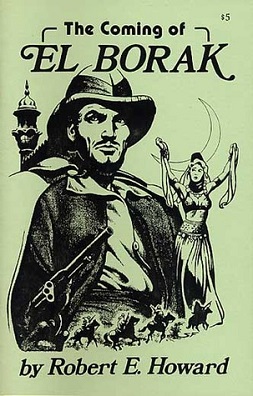
Following these instructions, Steranko then produced the initial concept paintings for Indiana Jones. These were stunning images depicting Jones in what would become classic cinematic scenes, such as the savage Nazi fistfight under the German Flying Wing airplane and the iconic leap from horseback to a speeding Nazi Army truck.
These early visuals, born from a modified El Borak, were instrumental in establishing key elements of Indiana Jones’s look and helped to seal the deal with the studio to greenlight the production.
Your Next Adventure: Discover El Borak!
While Indiana Jones conquered the cinematic world, remember that his visual genesis owes a significant debt to a formidable Texan adventurer carving out his legend in the treacherous hills and shadowy bazaars of Central Asia.
So, why not get to know the original inspiration yourself? The tales of Francis Xavier Gordon offer a thrilling dive into a world of pulp-era excitement, penned by a master of the genre.
You can discover the original exploits of El Borak in collections of Robert E. Howard’s work. And the spirit of this gunslinger-turned-Afghan legend continues, as contemporary authors have taken up the mantle.
For instance, James Lovegrove has recently resurrected Howard’s gunslinger extraordinaire in a new addition to the El Borak canon, “El Borak: Siege of Lamakan”! Pick up your copy today to read how, once more, the Great Game is afoot!
